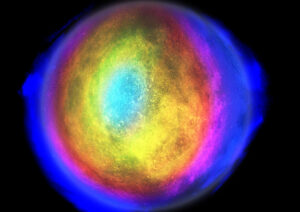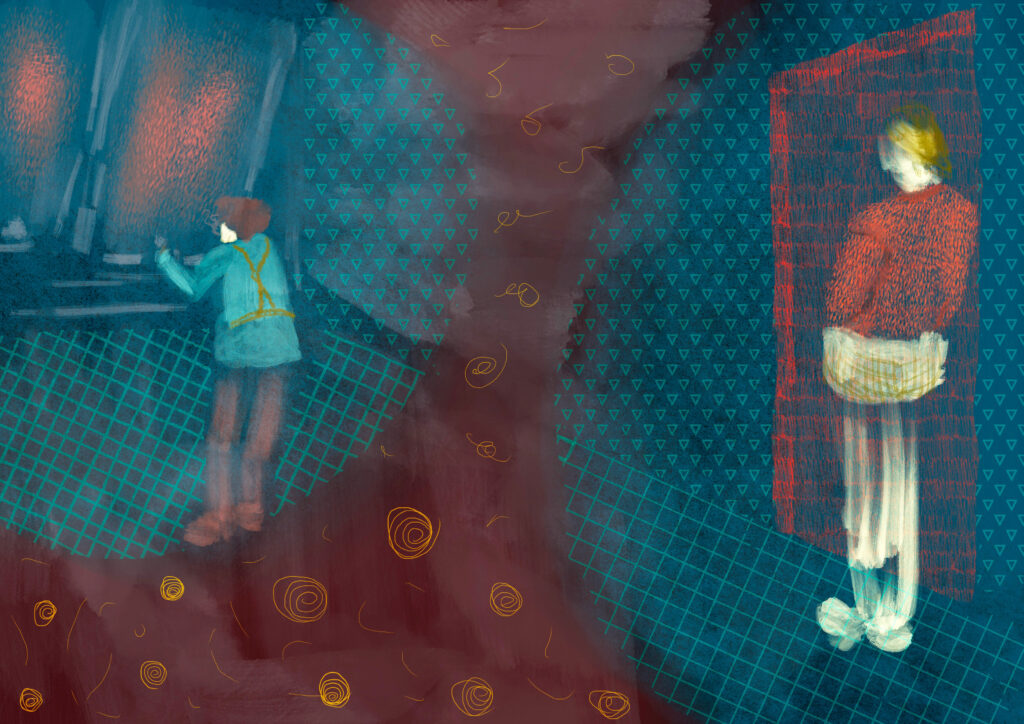
Professor Knowles, Doctor of Theoretical Astrophysics has recently published findings that challenge the Council of Paradigm Protectors. The latest debate stems from new observations from the James Webb Space Telescope and Knowles’ theories about what these observations tell us.
The observations show that there are galaxies beyond where the universe should have expanded after the Big Bang, and they are fully formed, meaning they are even older. He questioned the necessary explanation, that the Big Bang happened much, much earlier than first thought. He questioned indirectly, the accepted texts saying that the Big Bang was the Alpha, and the possibility that the universe as we’ve known it was an Omega. The universe has a beginning, middle and end. The universe has a definable outer limit and a center that we are close to because what we see is all around us. It is absolutely proven as we accept it as so.
Many members on the Council felt uncomfortable with the eccentric Professor Knowles when they visited his office. He displayed his hand made Newtonian reflector telescope from his early years at university. It was an eight-inch F-6 telescope with a focal length of 48 inches. The tube was made of layers of mahogany veneer rolled by Knowles himself and held together with epoxy resin and finished with fiberglass resin. It was set to look out of the tall window in his office with high ceiling. It was well known that the primary mirror was hand ground with carborundum grit, fine ground with aluminum and polished with cerium oxide polish. It is a dirty messy, loud process. Who does something like that? Just go buy a telescope.
Of course he had many other telescopes collected over the years. Dr. Knowles would set them up in the evenings at a public park with no artificial lighting at night. He would allow anyone, even children to use them. He would tell them they were looking into infinity. They could look at anything in any direction in the sky. This unorthodox behavior irritated Council members, as those who used telescopes were to be directed in their observations and told what they saw. Only the accepted, proven facts were to be discussed.
Knowles wrote his observation in the common vernacular that anyone could understand. This was a serious matter unto itself, as the Protectors have long agreed that all such discussions must be written such that those outside their esteemed circle would be confused. Authority radiates from the perception of the ignorance among those without the appropriate degrees. Even the simplest concepts can not be clearly understood by those who have not read and accepted texts of the Council’s truths. The accepted truths are the very evidence that a concept is correct. All enquiries in science begin with a theory based exclusively on facts, the previously stated truth of the Council. The enquiries must conclude that the original truths are facts. Without such discipline, the simplest inquisitive minds ask questions that can not be answered by the Council members, and this travesty must not be allowed, as only the members of the Most High are allowed to ask questions.

Knowles pointed out that Andromeda galaxy is moving toward our galaxy, and if the Big Bang is to be proven with everything moving apart, this should not happen, yet, the Council members justify it all by saying it is a matter of perspective, we are all just seeing it that way. It was suggested that the calculus used to prove the perspective was like so many other formulations, where the mathematician is working in theoretical modality and he or she can create a final formulation which is very creative indeed. The theoretical mathematician is allowed to use constants that are found for the formula and variables can be whatever they need to be; it is theoretical after all. One must always know what must be proven. Why would Knowles want to even introduce such a concept to the common reader?
Knowles told a story that if you have an immovable object and an unstoppable force, they can not exist in the same universe because they are absolutes; they are the central definition of their own universe and so it follows that the Big Bang is an absolute defining a universe, but it doesn’t have to be our universe. This blasphemy is profound, yet Knowles agrees the formulations for theory were well established and mathematically proven. Still, what if the conclusions apply to some other universe?
The blasphemy deepens as Knowles goes on to suggest that the universe is infinite. Space goes on into infinity where there is no beginning or end. He suggests that time has been the same; that there was no starting point, and there will be no end. If there was a Big Bang, it was just a bang that happened out there and it wasn’t big in the infinity of the universe, it was just one more celestial event in an infinite universe. The only real issue is that we can not truly conceptualize infinity.
About:
Peter C. Conrad holds a Bachelor of Education and his MA from the University of Saskatchewan. He has been a teacher, editor, instructional designer, published articles, wrote lectures for multiple art history and design courses for the Art Institute Online, and published three Canadian histories. He was a runner-up of the My Dream Writing Contest 2024, appeared in Wingless Dreamer Publisher’s 2024 anthology Summer Fireflies 2. His work appears in numerous literary journals worldwide and short stories broadcast on CBC radio. When Peter is not writing he is painting and drawing. He now lives in Calgary.






